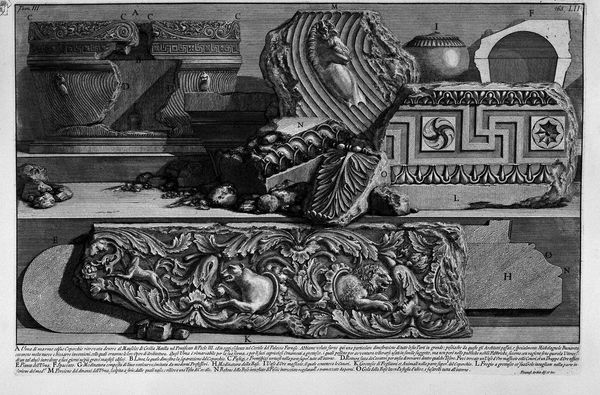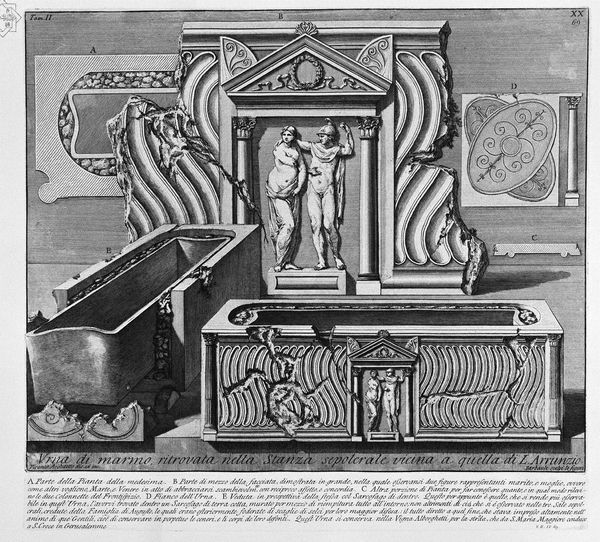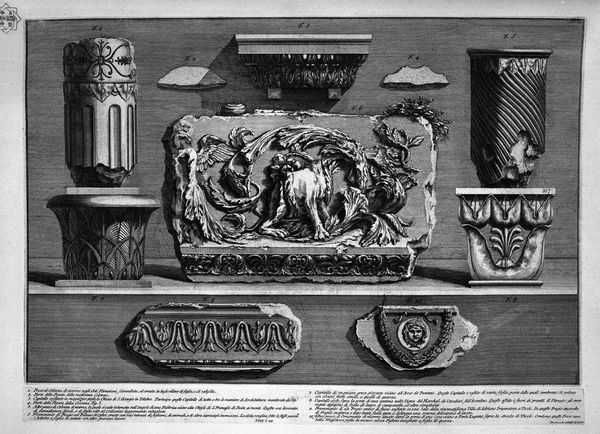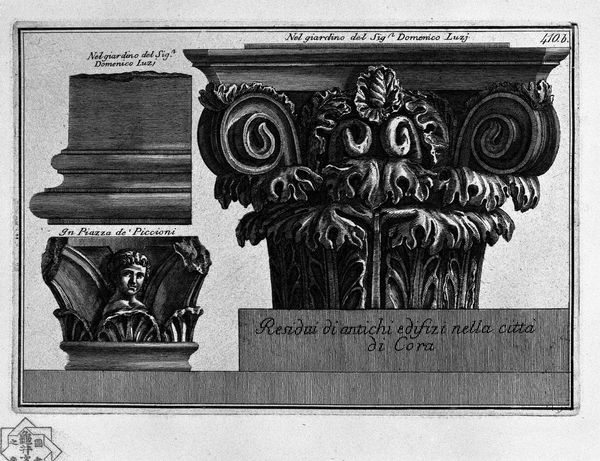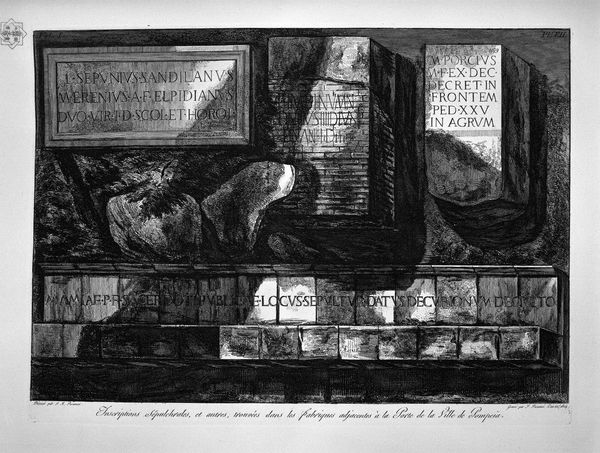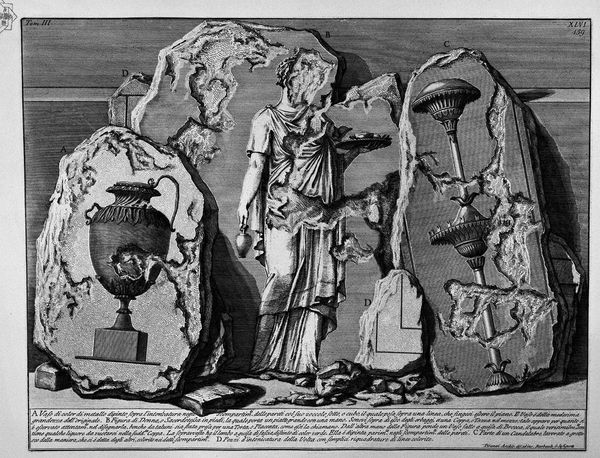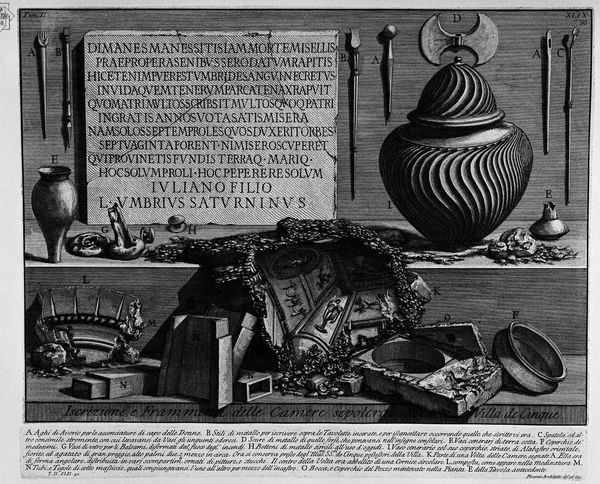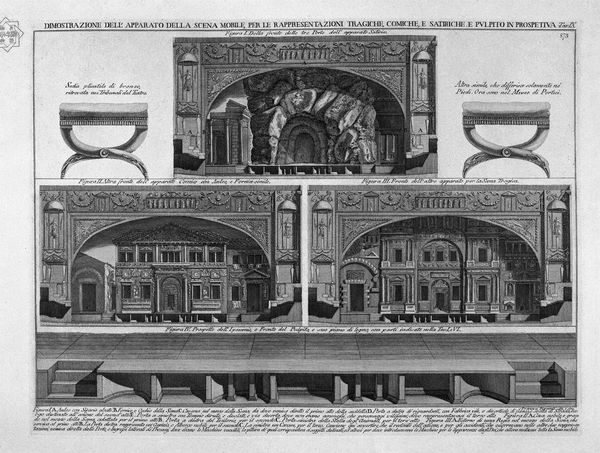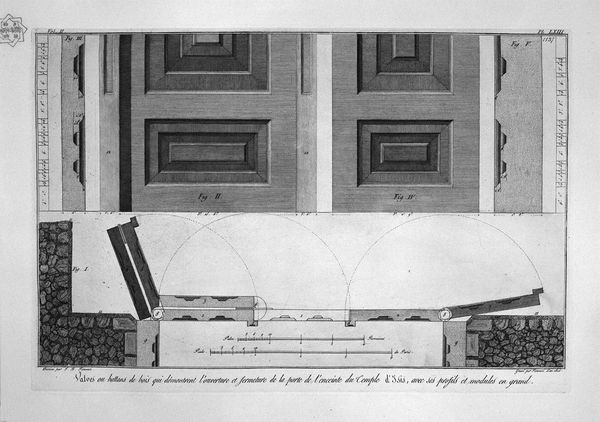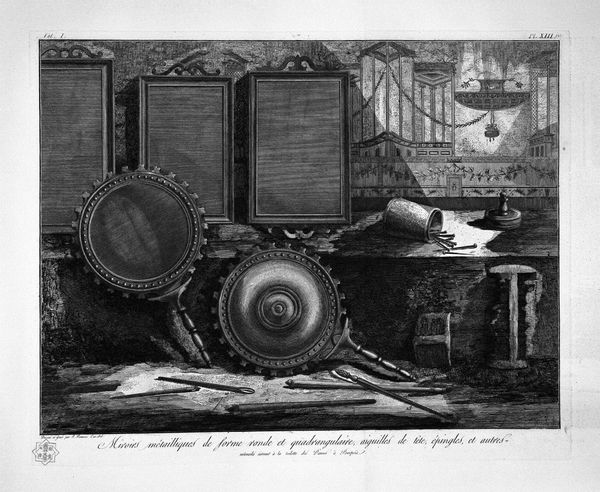
The Roman antiquities, t. 2, Plate XLV. Fragments of the burial chamber opposite the Church of St. Sebastian outside the walls (figures carved from Barbault).
0:00
0:00
print, metal, etching, engraving, architecture
# print
#
metal
#
etching
#
geometric
#
ancient-mediterranean
#
column
#
line
#
engraving
#
architecture
Copyright: Public domain
Editor: So, this is Plate XLV from "The Roman Antiquities" by Giovanni Battista Piranesi. It seems to depict fragments of a burial chamber. It's done as an etching, so it's all in black and white. I’m immediately struck by how fragmented everything is, almost like an archeological record itself. What do you see in this piece, particularly from a historical perspective? Curator: It’s fascinating how Piranesi uses the print medium here to document, but also to comment on the state of Roman antiquity. The visual fragmentation isn't just a record of ruins, it’s a statement. He's showing us the layers of history being unearthed, and he is revealing the transformation of Rome and its meanings over time. Editor: So, he’s not just showing what’s there, but also commenting on what has been lost, or transformed through the ages? Curator: Exactly. And think about the social context: the 18th-century fascination with the classical world. This wasn’t just about appreciating the art; it was about using the past to legitimize the present. Powerful families collected these antiquities. Did Piranesi's prints also serve a public function? Editor: Presumably they gave wider access to imagery, for people who couldn’t visit the sites, right? Democratising knowledge through the print. Curator: Precisely! How do you think the availability of these images might have shaped ideas about Roman history at the time? Think of the political implications... Editor: That makes me wonder about how he chose what to include, and how accurate these depictions really are. There's an element of storytelling here too, not just pure documentation. I’d not really considered before the politics of archaeological images! Curator: It's a lens that makes so much more visible! Editor: I’m definitely going to look at these kinds of historical prints in a different way now. I will be much more attuned to the cultural narrative framing the visuals.
Comments
No comments
Be the first to comment and join the conversation on the ultimate creative platform.
